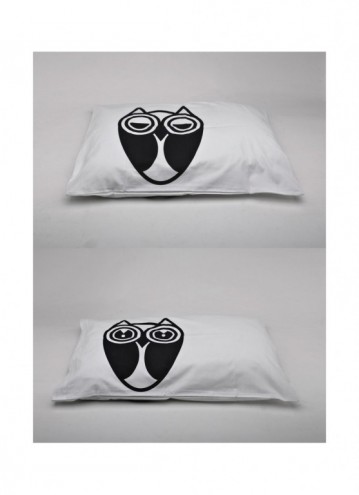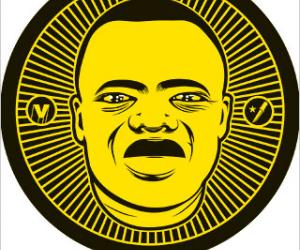The cover of the latest DIY edition of Design Indaba magazine is so striking that we thought we’d introduce everybody to the cover designer.
He’s young, dynamic and talented. A Vega brand communications graduate and a 2008 Design Indaba Emerging Creatives alumnus. He’s also rather versatile what with creating colourful artworks and VJing, in between servicing corporate clients. Meet Daniel Ting Chong.
We spoke to Chong in the Woodstock studio that he shares with a few other young designers. But we didn’t start at the beginning…
Play
Chong believes that self-motivated projects are the only way forward for creatives. Otherwise, he laments, one runs the risk of getting stuck doing work for other people and not making the time to “experiment, play and grow”, which is essential for any artist or designers.
“Play, play, play” Chong emphasises and you will grow. And just “make stuff and just keep making stuff” he believes.
Recognition
While Chong is probably one of the youngest members of the local creative crowd, the number of design awards and accolades he boasts reveals something about this talent, his popularity and his drive. He feels blessed that his hard work has been recognised with awards, but is adamant that he doesn’t work for awards. Good work should speak for itself, Chong believes. “I just try to make beautiful work because I love working and an award is then almost a way that the industry says thanks for beautiful work. In turn, I say thanks for the recognition by creating more beautiful work.”
Illustrating, for Chong, is about making things really beautiful. Using clean lines, with different weights, to create and experiment with shapes is the essence of illustration for Chong. He is also interested in ways of taking illustrations, which essentially live on paper, and giving it life in another medium.
Experiment
Taking illustrating one step further is what Chong managed to achieve with the Design Indaba DIY edition magazine cover. The creative process of this project was definitely fun, Chong says, but it also involved going back and forth countless times to get it just right. One of Chong’s main concerns with the Design Indaba magazine cover was to make it interactive in a way that would instantly draw people in. This was realised by making a cut-out, design-it-yourself cover, with instructions. Chong played around with type and design until he found a way in which the reader could fold the cut to make it 3D.
Process
Chong’s creative process typically starts in his sketchbook where he scribbles various ideas and gets the “obvious ideas out the way”. Next, Chong would pull the dictionary and thesaurus closer and explore definitions of the main concepts of the given project. Brainstorming ideas and phrases goes hand-in-hand with online research and browsing images. Then he puts pen to paper, or mouse pointer to computer screen, and plays and creates and tweaks and recreates and tweaks until he’s got something he is satisfied with.
One of Chong’s current projects is a commission by one of South Africa’s big banks. The project involves creating wallpaper designs with various positive keywords and phrases. These wallpapers will be turned into large-scale displays at the bank’s headquarters in Gauteng. Much of this commission involved creating ornate typefaces, which Chong really enjoyed. He adds that it is always encouraging when big corporations invest in creativity in some way.
Inspiration
Inspiration is not a specific person or style for Chong. He starts by citing his school art teacher, Andrew Putter, as one of his influences and Peet Pienaar of The President as one of his mentors. But Chong believes that inspiration is often misjudged and is wary of the type of inspiration that results in carbon copies. Inspiration is everywhere for Chong but also means different things at different times, for different projects. His approach might best be described as a “take what you need for it” and “learn from those that are willing to teach”.
Illustrator by day, VJ by night could be an apt description for Chong. As part hobby, part creative expansion, Chong VJs for a number of local bands in and around Cape Town. He helps bring the music to life with interesting interactive and multimedia music-meets-illustration installations.
Artist
And then there’s Chong the artist. He is clear about the distinction when he talks about this art and his design. Art can never be design, Chong believes. Art can only happen in a certain space and in response to something. Design, for Chong, is more proactive. Design can easily cross its own boundaries to become whatever it needs to be. Design, Chong says, is characterised by typography, symbols and illustration. Art, on the other hand, is more “messy” and a way that Chong has fun. It’s “messy” and allows him to take a break from his PC. When Chong makes art he plays with kokis and crayons, takes himself less seriously and just gets absorbed in making something tangible. Art might be Chong’s excuse for making mistakes but his art has nonetheless featured in a number of local exhibitions.
Fun
For Chong creativity is about having fun. “I love what I do and I love that I can do what I want. I get to do projects that excite me,” he says.



















